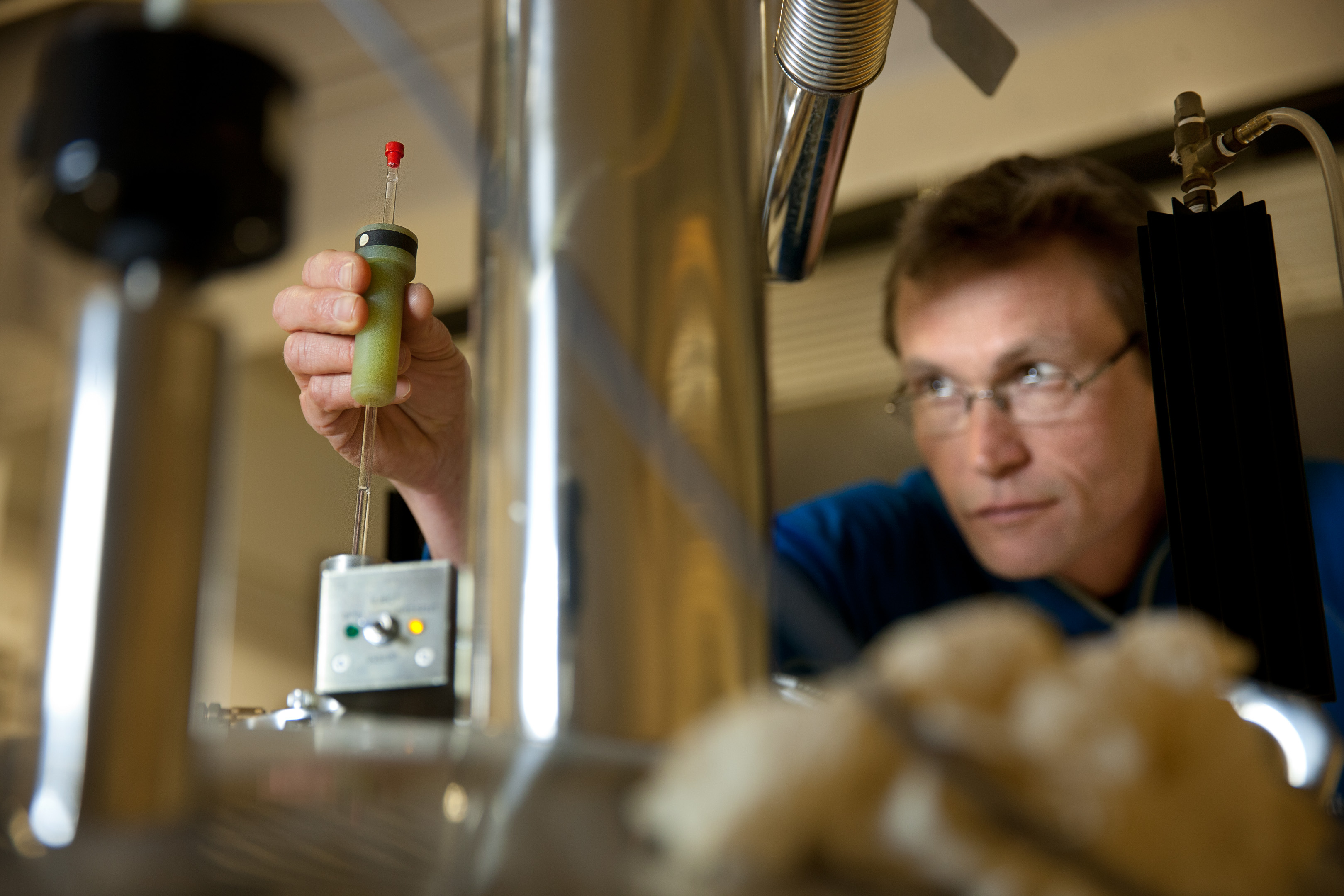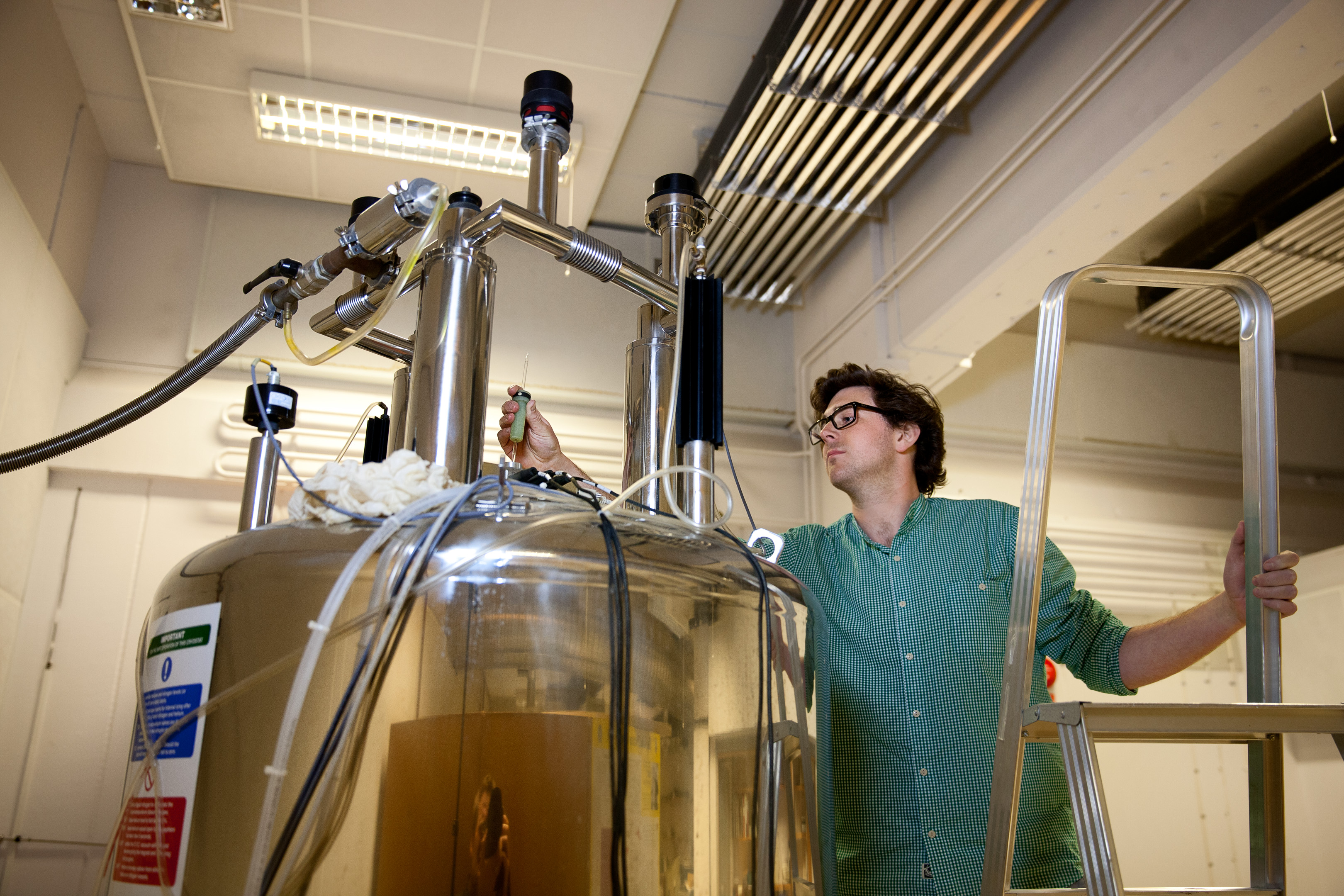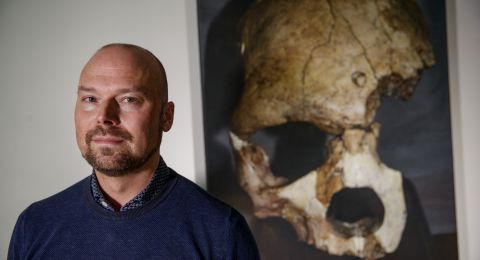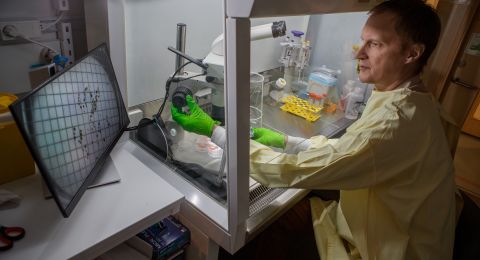
Project Grant 2013
Rationalizing drug design: decoding molecular recognition using a multidisciplinary approach
Principal investigator:
Mikael Akke, Professor of Biophysical Chemistry
Co-investigators:
Lund University
Hakon Leffler
Derek Logan
Ulf Nilsson
Stina Oredsson
Ulf Ryde
European Spallation Source (ESS)
Esko Oksanen
Institution:
Lund University
Grant in SEK:
SEK 40.4 million over five years
There are researchers who investigate what pharmaceuticals bind to what proteins. There are other researchers who investigate how tightly the pharmaceuticals bind to the proteins. And then there are researchers in Lund who want to investigate in detail what proportion of the binding force is explained by various conditions, such as the protein's mobility.
Mikael Akke, Professor of Biophysical Chemistry, understands that it may sound a bit dry.
“Sure, it's really nerdy. We've decided to be this extremely nerdy because we think that this area has been neglected - it has simply been too technically difficult to take these effects into account.”
More freedom of movement provides stronger binding
Mikael Akke is talking about something called conformational entropy.
Entropy is a thermodynamic concept that, in very basic terms, can be described as the degree of disorder, or a measurement of the number of different states a molecule can have. More disorder entails higher entropy. Conformational entropy is related to how many different conformations a molecule has – meaning variants with slightly different placements of the atoms. This is what the group in Lund will study.
“The strength of the binding between protein and pharmaceutical depends in part on what degree of "disorder" that the two are permitted to have when they are bound to each other. If the freedom of movement is large, it makes the binding stronger, all else being equal,” says Mikael Akke.

More detailed studies than before
What the Lund researchers are doing is far more detailed than what has been done earlier. It has been almost impossible to find out anything about this entropy at an atomic level, but in Lund, they have succeeded using a technique called NMR spectroscopy. The researchers have developed ways of both measuring and interpreting their data so that they can draw conclusions about the mobility of the molecules.
The work in the project consists of a whole chain of activities. First, the researchers design a molecule that can bind to the protein they are studying and synthesize it. Then, they map the protein's and the molecule's structure using X-ray diffraction or neutron diffraction. Both of the techniques make it possible to see how every atom is placed in great detail. Then the researchers use NMR spectroscopy to study how the molecule and protein move when they bind to each other. Lastly, they simulate their dynamics in a computer and work out how much of the binding force is due to the conformational entropy.
"We need a lot of different competencies in the research team: organic chemists who can synthesize small molecular pharmaceuticals, crystallographers who see how the molecule binds, theoretical chemists who can simulate the binding event, and so on. As a last touch on the study, we have a medical doctor who knows everything about the protein we are working with, and a cell biologist who can test the substance in cell models," says Mikael Akke.

Can provide useful information for the pharmaceuticals industry
Researchers have suspected for some time that conformational entropy could be important for the function of a pharmaceutical. But according to Mikael Akke, it is only in recent years that it has been established that it definitely is important. New knowledge from the project in Lund could improve pharmaceutical design in the very early development stages.
“This is not the biggest problem of the pharmaceutical industry, which is rather that new pharmaceuticals do not make it through the clinical trials. But still, everything that can be done to reduce the development costs is beneficial,” says Mikael Akke.
The plan is to design several different classes of pharmaceuticals to be able to study the impact of various factors on the binding force, and then investigate one or two classes a year during the five-year project.
"In the final years, we intend to try to make some series of molecules designed according to the principles for entropy that we've discovered. The goal of the project is basic science, to understand the binding better. But it is not impossible that we can actually provide something that is useful to the pharmaceutical industry," says Mikael Akke.
Text Lisa Kirsebom
Translation Semantix
Photo Magnus Bergström
NMR
NMR stands for nuclear magnetic resonance.



